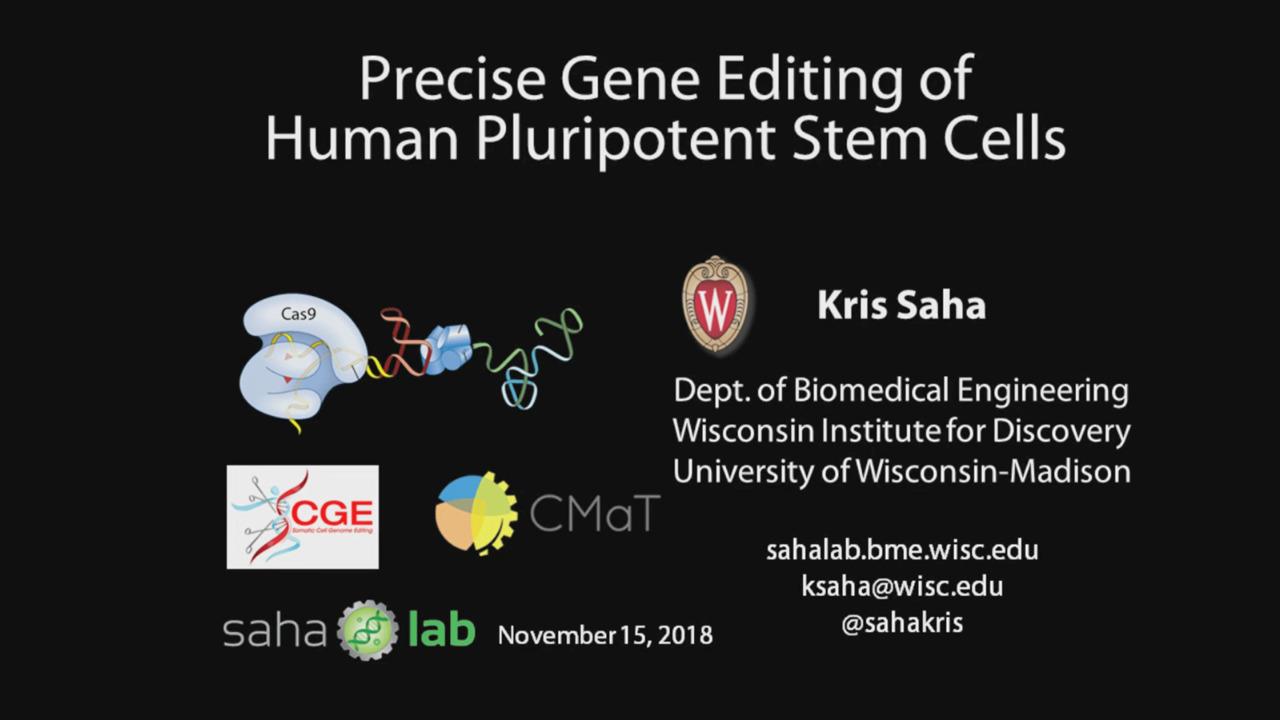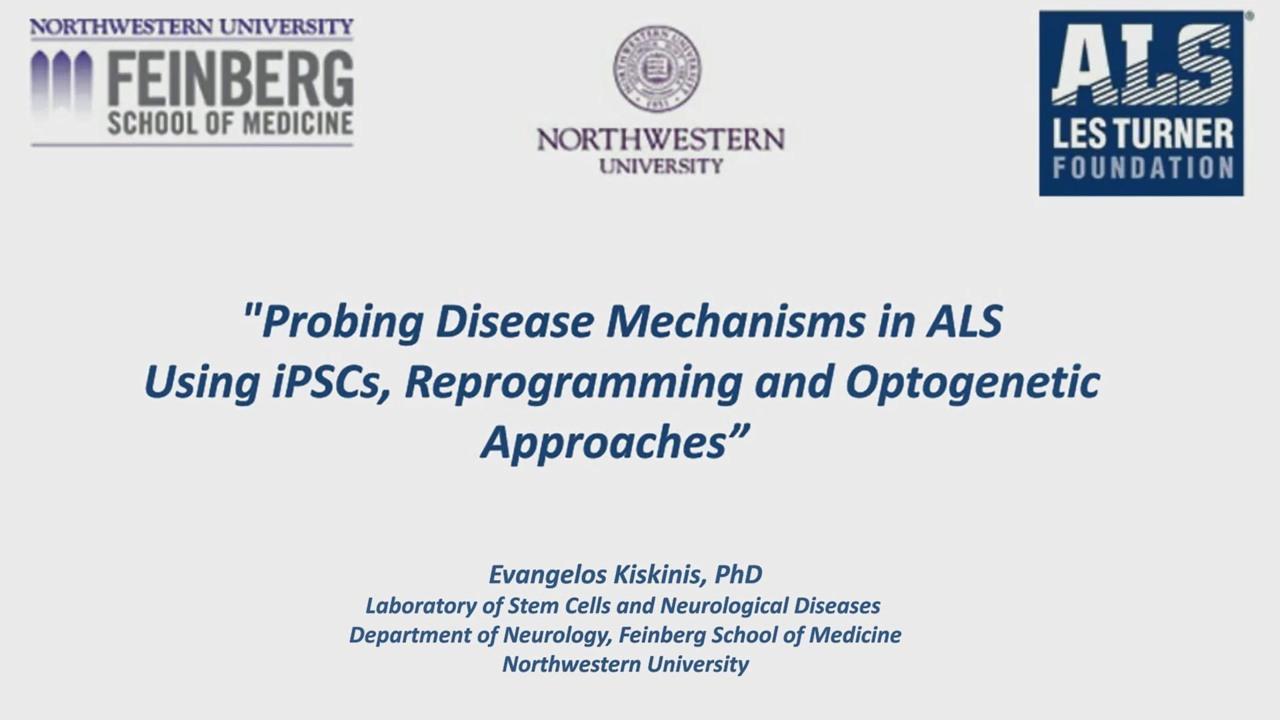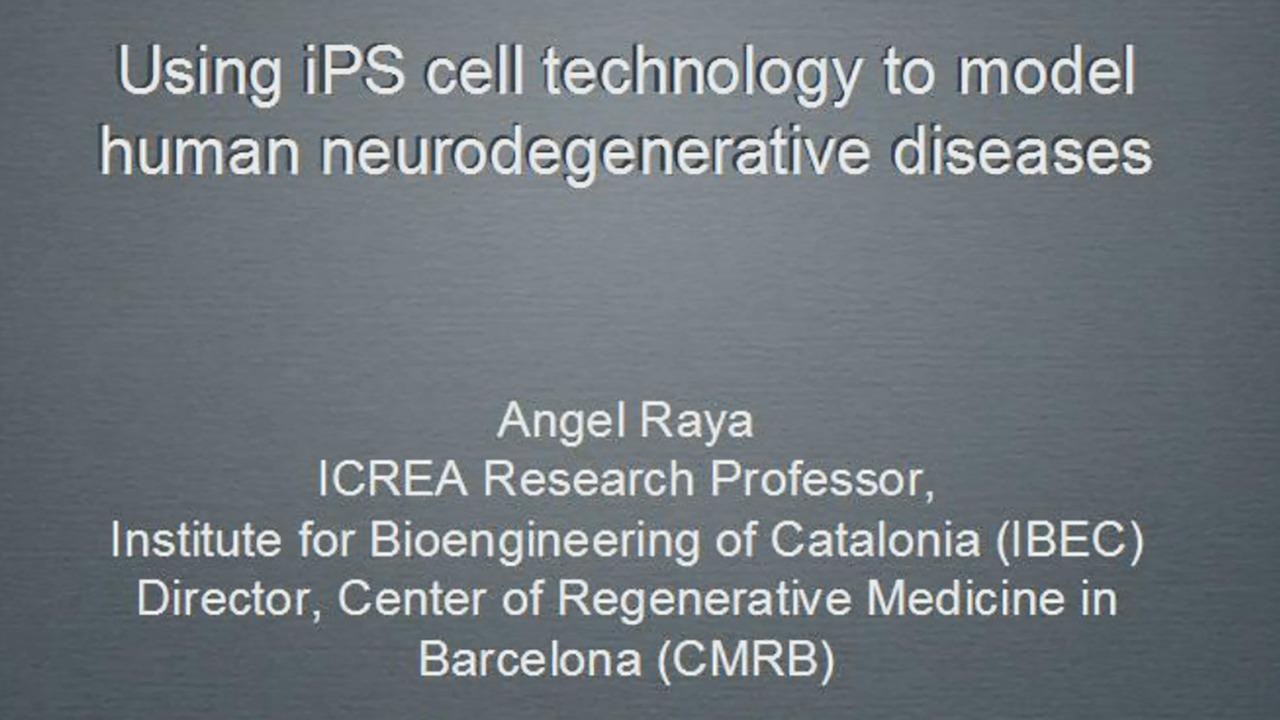Search Thermo Fisher Scientific
5 Steps of Neurodegenerative Disease Modeling

Recent innovations in stem cell research have shown a promising future in regenerative medicine.
Induced pluripotent stem cells (iPSCs) are globally recognized as a powerful research tool for modeling human diseases. Together, human iPSCs and CRISPR-Cas9 genome editing systems provide researchers with effective in vitro tools for assessing gene function, disease modeling, and regenerative therapy research strategies.
NEW Ask us today about our expanded, large knock-in capabilities—now for any cell type
Follow our 5 steps application guide to help improve your success in modeling Parkinson's disease.
Disease model generation: an easy-to-follow five-step workflow

Modeling neurodegenerative disease
Neurodegenerative diseases, such Parkinson’s disease (PD), Alzheimer’s disease (AD), amyotrophic lateral sclerosis (ALS) and Huntington’s disease (HD), affect millions of people worldwide. PD is the fastest growing of these neurological disorders, affects over 6· million people worldwide. Like all neurodegenerative disease which primarily affecting neurons in the human brain, PD is characterized by the selective loss of dopaminergic neurons (DA) in the substantia nigra of the midbrain. Obtaining human cells for in vitro disease models is often a challenge. Parkinson’s and other human disease research has been hindered by a lack of access to diseased tissue to study. It is now possible to develop induced pluripotent stem cells from control or PD patient fibroblasts and differentiate them into neurons.
The pioneering of iPSC technology by Shinya Yamanaka and colleagues presented a very obvious advantage in creating iPSC-based cell models to model human disease. Coupled with advances in gene editing technologies, using iPSCs to build human disease models promises to advance our understanding of disease mechanisms underlying human disease pathologies important to the development of therapeutic drugs and implementation of cell and gene therapies.
Free download: Disease model generation: 5 steps to model Parkinson’s disease
Overcome the challenges of genome editing in human pluripotent stem cells for building tissue-relevant disease models. Use this proven guide and validate steps to facilitate generation of your iPSC-derived neurodegenerative disease model.
Edit

Our comprehensive set of validated tools and services are designed to help researchers overcome the challenges of genome editing in stem cells and build successful iPSC-derived disease models. Advances in gene editing technologies, including TALEN and CRISPR-Cas9 genome editing tools, now allow for selected mutations to be corrected or genes to be knocked out in hiPSCs. Our collection of trusted products and solutions support every step in the cell engineering workflow and are designed to work together to minimize the trial-and-error phase so that you get answers faster and with less effort.
Recommended products:
- NEW Pluripotent Stem Cells (PSC) Gene Editing Kit
- TrueCut Cas9 Protein v2
- TrueGuide RNA
- PerfectMatch TALENs
- StemFlex Medium
- Cas9 iPSC Line
Learn more:
Deliver

Various factors affect the ability to edit a given genomic loci, including transfection efficiency. Keep flexibility, simplicity and versatility in your research project with the Neon Transfection system. Deliver CRISPR-Cas9 RNP into your target cells with high efficiency and high cell viability. Use the Neon system to achieve up to 90% transfection and gene editing efficiency. Alternatively, consider our effective lipid-based solution: Lipofectamine Stem transfection Reagent.
Recommended products:
Learn more:
Tip: Protocols that use the Neon Transfection System may need to be optimized for genome editing efficiency and cell survival for your own hiPSC line. Request your Neon demo today
Clone

Our large portfolio of cell culture media and reagents, along with our custom media services, are designed for optimal growth, expansion, and storage of differentiated cells. The StemFlex/laminin system with RevitaCell supplement offers superior cell survival after transfection and single-cell sorting to dramatically reduce clonal isolation effort and timelines.
Recommended products:
Learn more:
Expand

Assessing stem cells and their progeny to confirm pluripotency or ensure differentiation into the desired cell type is a critical step in your research. Gibco brand media comprise a broad selection of specialty products optimized for stem cell populations, many of which are free of animal-derived components. These media are designed to minimize adaptation time and maximize cell performance. The StemFlex/laminin system with RevitaCell supplement offers superior cell survival after transfection and single-cell sorting to dramatically reduce clonal isolation effort and timelines.
Recommended products:
Learn more:
Tip: When using StemFlex Medium, medium changes every 3 days are sufficient for expansion of clones.
Characterize

When studying disease models, a thorough characterization of stem cells and their microenvironments is crucial for your success. It’s important to confirm pluripotency and genomic stability after genome editing. We offer complete solutions for qualification of human pluripotent stem cell (hPSC) lines. Learn more at thermofisher.com/characterization
Recommended products:
- Ion GeneStudio S5 System
- KaryoStat Assays
- Pluripotent Stem Cell 4-Marker Immunocytochemistry Kit
- TaqMan® hPSC Scorecard Assay
- PluriTest Assay
Learn more:
Tip: It is important to assess the genomic stability of your pluripotent stem cells after genome editing. Our KaryoStat Assays offer a higher resolution alternative to g-banding karyotyping for accurately checking chromosomal abnormalities. Explore more Characterization tools and services
Differentiate

We offer researchers a number of high-quality growth factors and cytokines for targeted differentiation of stem cells. These proteins are extensively tested to help ensure high biological activity, high purity, freeze-thaw stability, and structural homogeneity.
Recommended products:
Learn more:
Tip: Dopaminergic (DA) neurons can be generated in bulk and replated for downstream assays. When modeling Parkinson's disease that is characterized by loss of DA neurons in the midbrain, our Gibco PSC Dopaminergic Neuron Differentiation Kit enables rapid differentiation of hiPSCs into authentic midbrain DA neurons.
Measure

With the CellInsight CX7 High-Content Screening Platform you have a choice of imaging modes to extract the information you need from your samples. Use the entire fluorescence spectrum to optimize your assay, and select either widefield or confocal optics for any channel. You also have 4-color brightfield options for colorimetric analysis of tissue sections. You can’t always predict what assays are coming next, but the CellInsight CX7 HCS Platform was designed to help ensure you’ll be covered.
Recommended products:
- CellInsight CX7 platform
- CellEvent Caspase-3/7 detection reagents
- QuantStudio 12K Flex Real-Time PCR System
- Varioskan LUX multimode plate reader
- Neurite Outgrowth Staining Kit
Learn more:
Tip: Tracking of stage-specific markers is important to ensure high-quality differentiation.
Edit

Our comprehensive set of validated tools and services are designed to help researchers overcome the challenges of genome editing in stem cells and build successful iPSC-derived disease models. Advances in gene editing technologies, including TALEN and CRISPR-Cas9 genome editing tools, now allow for selected mutations to be corrected or genes to be knocked out in hiPSCs. Our collection of trusted products and solutions support every step in the cell engineering workflow and are designed to work together to minimize the trial-and-error phase so that you get answers faster and with less effort.
Recommended products:
- NEW Pluripotent Stem Cells (PSC) Gene Editing Kit
- TrueCut Cas9 Protein v2
- TrueGuide RNA
- PerfectMatch TALENs
- StemFlex Medium
- Cas9 iPSC Line
Learn more:
Deliver

Various factors affect the ability to edit a given genomic loci, including transfection efficiency. Keep flexibility, simplicity and versatility in your research project with the Neon Transfection system. Deliver CRISPR-Cas9 RNP into your target cells with high efficiency and high cell viability. Use the Neon system to achieve up to 90% transfection and gene editing efficiency. Alternatively, consider our effective lipid-based solution: Lipofectamine Stem transfection Reagent.
Recommended products:
Learn more:
Tip: Protocols that use the Neon Transfection System may need to be optimized for genome editing efficiency and cell survival for your own hiPSC line. Request your Neon demo today
Clone

Our large portfolio of cell culture media and reagents, along with our custom media services, are designed for optimal growth, expansion, and storage of differentiated cells. The StemFlex/laminin system with RevitaCell supplement offers superior cell survival after transfection and single-cell sorting to dramatically reduce clonal isolation effort and timelines.
Recommended products:
Learn more:
Expand

Assessing stem cells and their progeny to confirm pluripotency or ensure differentiation into the desired cell type is a critical step in your research. Gibco brand media comprise a broad selection of specialty products optimized for stem cell populations, many of which are free of animal-derived components. These media are designed to minimize adaptation time and maximize cell performance. The StemFlex/laminin system with RevitaCell supplement offers superior cell survival after transfection and single-cell sorting to dramatically reduce clonal isolation effort and timelines.
Recommended products:
Learn more:
Tip: When using StemFlex Medium, medium changes every 3 days are sufficient for expansion of clones.
Characterize

When studying disease models, a thorough characterization of stem cells and their microenvironments is crucial for your success. It’s important to confirm pluripotency and genomic stability after genome editing. We offer complete solutions for qualification of human pluripotent stem cell (hPSC) lines. Learn more at thermofisher.com/characterization
Recommended products:
- Ion GeneStudio S5 System
- KaryoStat Assays
- Pluripotent Stem Cell 4-Marker Immunocytochemistry Kit
- TaqMan® hPSC Scorecard Assay
- PluriTest Assay
Learn more:
Tip: It is important to assess the genomic stability of your pluripotent stem cells after genome editing. Our KaryoStat Assays offer a higher resolution alternative to g-banding karyotyping for accurately checking chromosomal abnormalities. Explore more Characterization tools and services
Differentiate

We offer researchers a number of high-quality growth factors and cytokines for targeted differentiation of stem cells. These proteins are extensively tested to help ensure high biological activity, high purity, freeze-thaw stability, and structural homogeneity.
Recommended products:
Learn more:
Tip: Dopaminergic (DA) neurons can be generated in bulk and replated for downstream assays. When modeling Parkinson's disease that is characterized by loss of DA neurons in the midbrain, our Gibco PSC Dopaminergic Neuron Differentiation Kit enables rapid differentiation of hiPSCs into authentic midbrain DA neurons.
Measure

With the CellInsight CX7 High-Content Screening Platform you have a choice of imaging modes to extract the information you need from your samples. Use the entire fluorescence spectrum to optimize your assay, and select either widefield or confocal optics for any channel. You also have 4-color brightfield options for colorimetric analysis of tissue sections. You can’t always predict what assays are coming next, but the CellInsight CX7 HCS Platform was designed to help ensure you’ll be covered.
Recommended products:
- CellInsight CX7 platform
- CellEvent Caspase-3/7 detection reagents
- QuantStudio 12K Flex Real-Time PCR System
- Varioskan LUX multimode plate reader
- Neurite Outgrowth Staining Kit
Learn more:
Tip: Tracking of stage-specific markers is important to ensure high-quality differentiation.
Featured webinars
Precise gene editing of human pluripotent stem cells
Probing disease mechanisms in ALS and ion-channel epilepsy using iPSCs
Resources
Support
Intended use of the products mentioned on this page vary. For specific intended use statements please refer to the product label.



